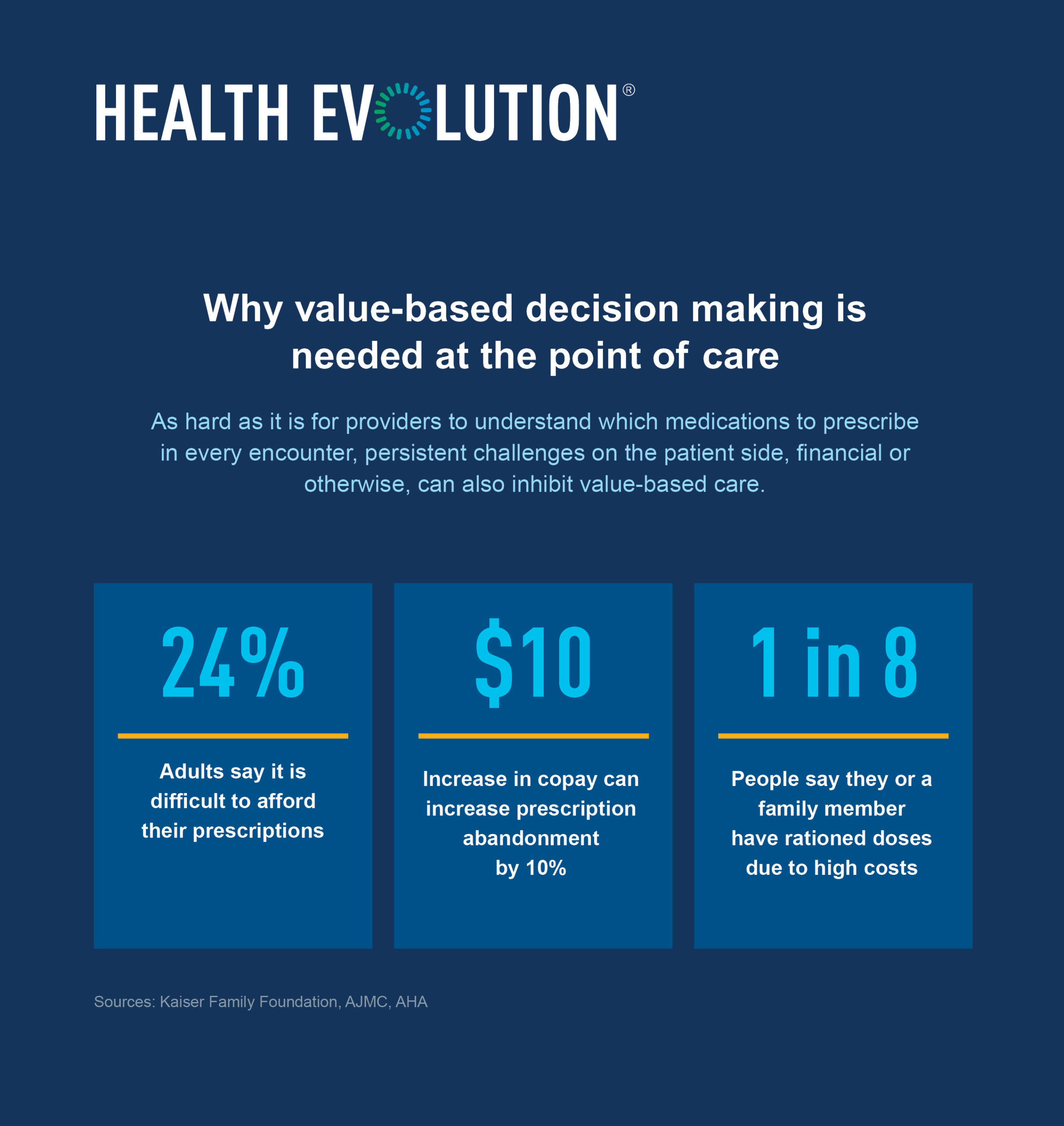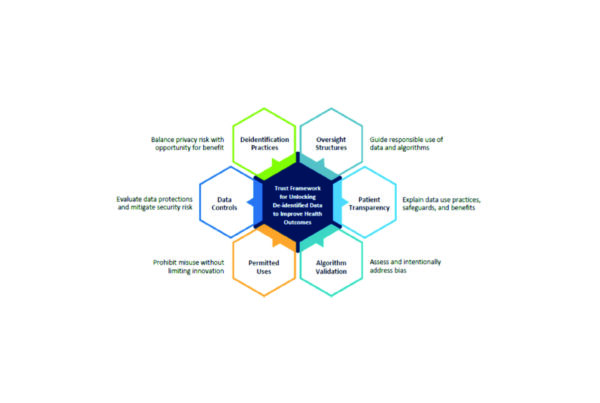2021 Outlook on Enabling Value-Based Decision Making at the Point of Care
This Outlook Report examines the obstacles and opportunities for delivering the most relevant information to providers and patients during the decision-making process to reduce costs and improve care quality.
With nearly 5 billion prescriptions filled in the U.S. every year1, health care organizations have an enormous opportunity to reduce costs and improve quality – if they can deliver the right information to the point of care.
Achieving that is a challenge, however, as 78 percent of providers who have access to coverage data do not find the information reliable,2 which in part explains why 72 percent of providers do not discuss medication prices with their patients.3
Today’s technologies also pose productivity problems for more than half of physicians. Sixty four percent of physicians, in fact, agreed or strongly agreed that EHRs added to their daily frustration level4 while 77 percent said they’ve had to change, manage, or resend a prescription order once it has been sent to the pharmacy.5
To address these issues and drive impactful change, providers, payers, and technology companies have begun creating visibility into the information needed for clinical effectiveness, cost, and convenience. Connecting all the relevant data together is the next step in enabling providers and patients to make informed decisions.
Improving upon existing practices for ordering medications begins with three steps:
- Delivering the right data at decision-making points
- Engaging providers and patients via the workflow
- Collaborating across health systems and health plans
Sources
1 Statista, 2021, Total number of retail prescriptions filled annually in the United States from 2013 to 2025
2 RxRevu, 2020, How new prescription decision-making technology can reduce patient medication costs
3 RxRevu, 2020, How new prescription decision-making technology can reduce patient medication costs
4 American Academy of Family Physicians, 2019, Study: EHRs contribute to family physician stress, burnout
5 RxRevu, 2020, How new prescription decision-making technology can reduce patient medication costs
Outlook Co-Chairs & Contributors:
Facilitator: Tom Sullivan, EVP & Editor-in-Chief, Health Evolution
Co-Chairs:
Aaron Martin, EVP, Chief Digital Officer, Providence
Prem Shah, EVP, Specialty and Product Innovation, CVS Health
Paul Brient, SVP & Chief Product Officer, athenahealth
Carm Huntress, Founder & Chief Innovation Officer, RxRevu
Contributors:
Derek Abruzzese, Tufts Health Plan and Harvard Pilgrim Health Care
Michael Anderes, Inception Health, Froedtert Health
Scott Decker, Homecare Homebase
Jeb Dunkelberger, Sutter Health | Aetna
Lisa Esch, NTT DATA
Julieann Esper Rainville, PointClickCare
Tad Funahashi, Kaiser Permanente
Rick Gates, Walgreens
Rebekkah Gee, LSU HCSD
Josh Goode, SCAN Health Plan
Sonny Goyal, Blue Cross and Blue Shield North Carolina
Sally Jeffcoat, Trinity Health
Kyle Kiser, RxRevu
Randy Moore, Franciscan Alliance
Ezra Perlman, Francisco Partners
Jason Rose, AdhereHealth
Bhaskar Sambasivan, CitiusTech Inc
Paul Scheel, Washington University School of Medicine
Karen Schulte, CareMore
Balajee Sethuraman, emids Technologies
Rajiv Shah, MyMeds
Mark Shaver, University of Maryland Medical System
David Shulkin, Sanford Health
Mona Siddiqui, Humana
Saurabh Sinha, emids Technologies
Ashley Smith, Oliver Wyman
Don Trigg, Cerner Corporation
Todd Van Tol, Blue Cross and Blue Shield of Michigan
Clem “Bo” Wilkes, III, Ballad Health
Julie Yoo, Andreesen Horowitz











